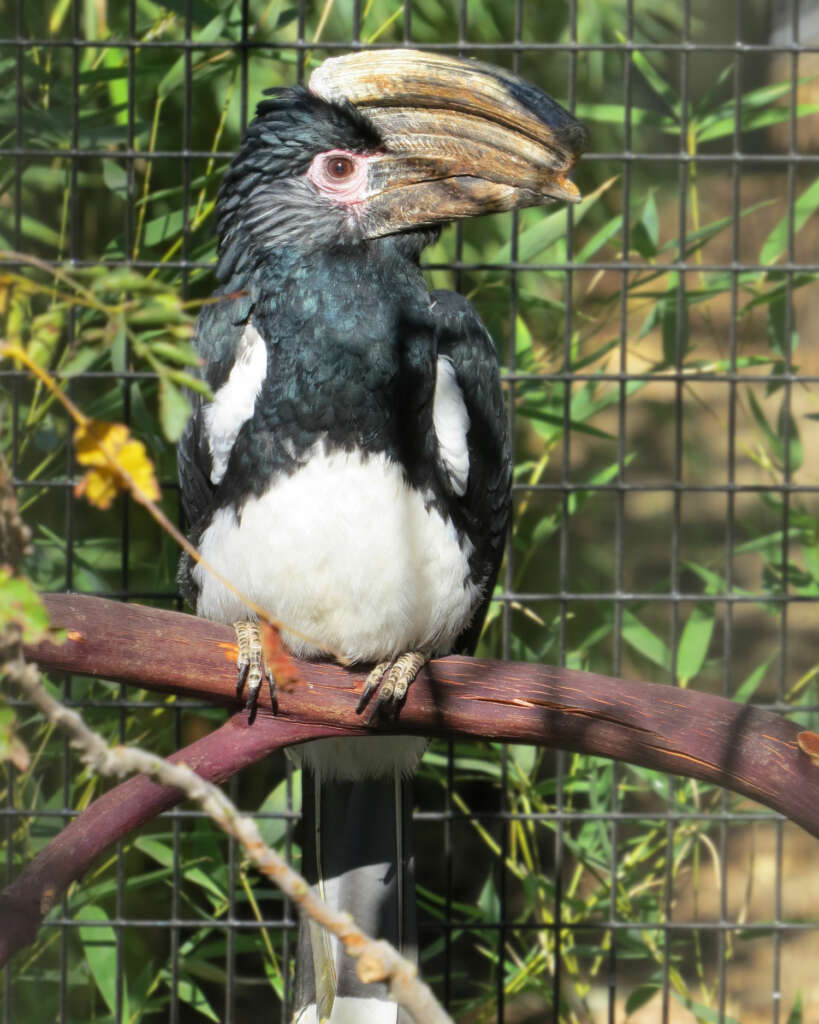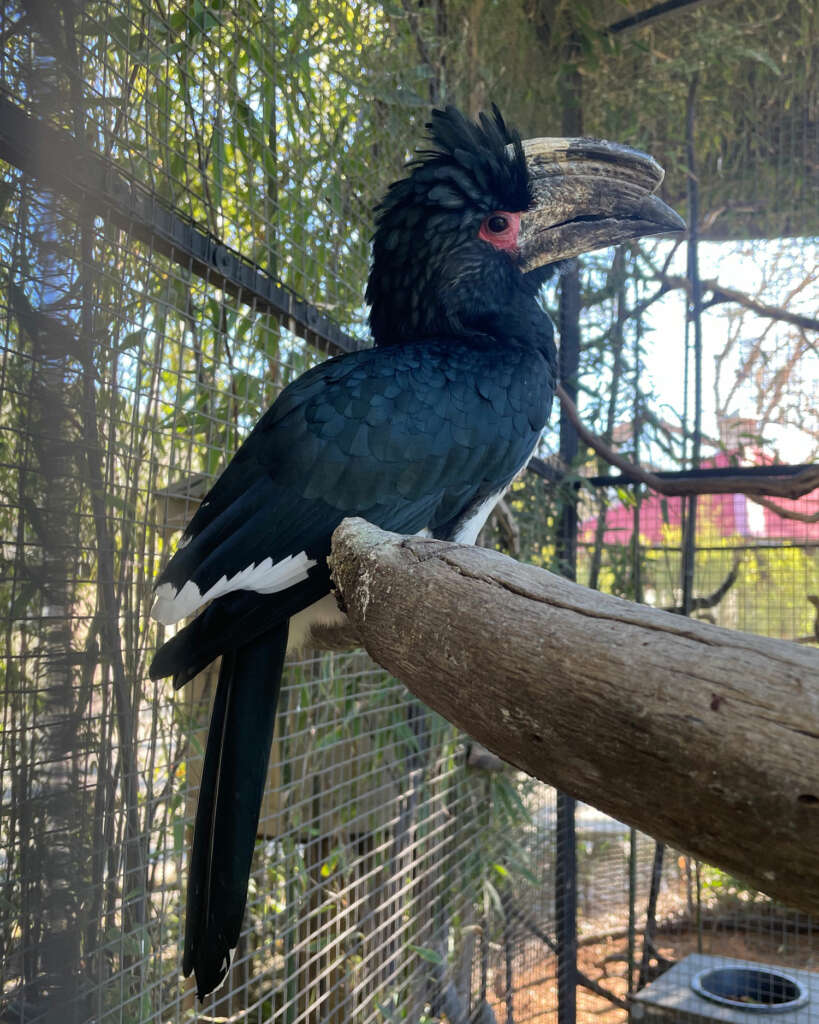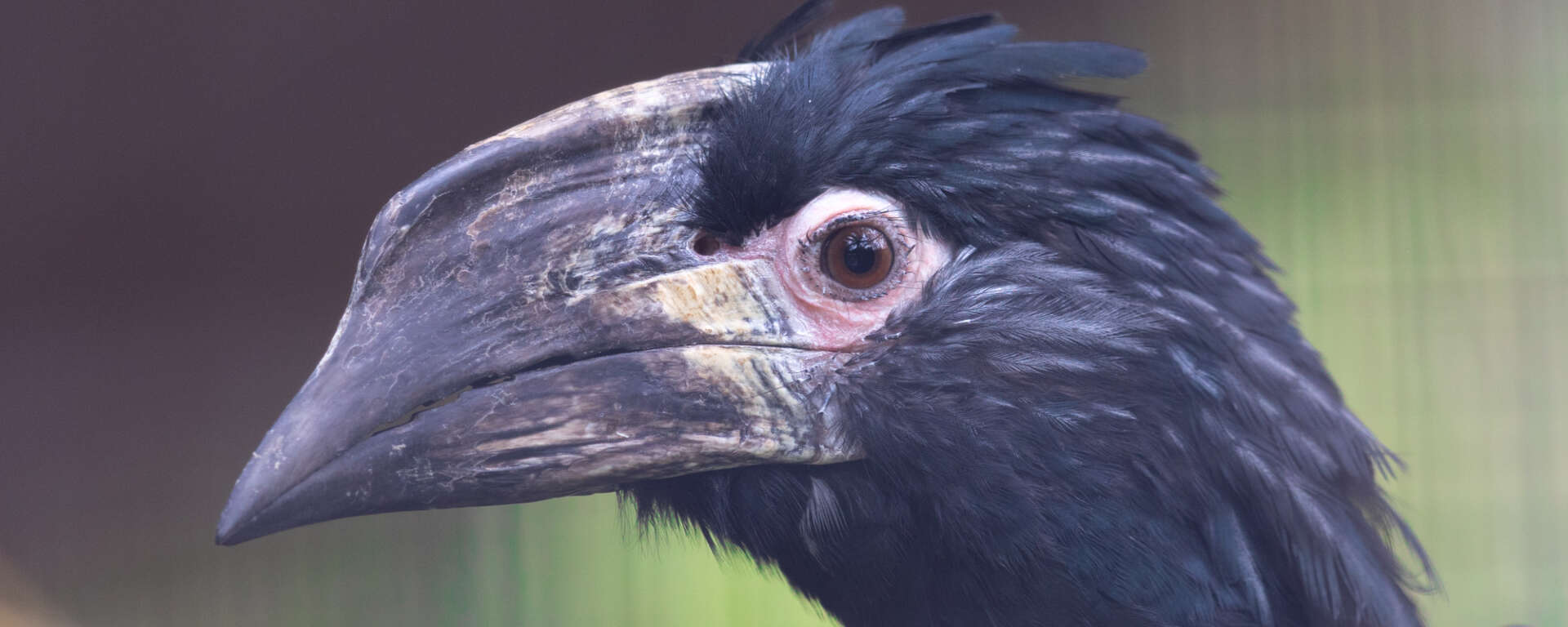Creature Feature: Trumpeter Hornbill
Posted in: Conservation, Safari Spotlight
When you visit Safari West, you may hear what sounds like a loud “WAH-WAH-WAH” call booming across the lower compound. That’s not a crying baby, it’s the sound of a trumpeter hornbill!
Trumpeter hornbills are found in Southeast Africa and live in forests and woodlands. In the wild, they eat a variety of fruits, figs, and sometimes insects. At Safari West, our trumpeters are fed fruits and vegetables such as apples, yams, and grapes (their favorite treat is papaya!), and a pellet specifically made for birds with soft bills.
Their conservation status listed by the IUCN is currently Least Concern. The IUCN (International Union for Conservation of Nature) is a global network that combines the knowledge and resources of thousands of member organizations and experts. The IUCN manages the Red List: an indicator of overall biodiversity health, with categories ranging from Least Concern to Extinct.

Photo: Cheryl Crowley

Photo: Julia Hartlage
It’s clear where hornbills get their name. All species of hornbill have a ridge called a casque (a French word for “helmet”) on top of their beaks. Casques come in many shapes and sizes depending on what the hornbill uses them for. The casque on a trumpeter hornbill is especially large and open to the mouth cavity. This may cause the casque to amplify the volume of a hornbill’s call. You may see one of our hornbills rubbing the side of its beak on a branch. Their bills are sensitive to touch, and this behavior may be to scratch an itch or sharpen its beak.
Hornbills do not build nests out of twigs and sticks like many other birds do. Instead, hornbills are what’s known as cavity nesters. Mated pairs find hollow spaces, such as inside a dead tree. They then work together to line the interior with soft materials like leaves. Once that is done, the male closes the female inside, using mud pellets, droppings, and sticky food. He leaves a crack in the entrance only large enough for him to slip food through for his mate. Trumpeter hornbill females lay between two to four eggs per clutch. Incubation is approximately 28 days. After about 50 days, the chicks are ready to fledge. They and their mother break open the entrance to their nest and finally leave their confinement. This may seem tough on the mother and baby hornbills, but this nesting strategy protects them from predators. At Safari West, we provide small structures in our hornbill habitats for our birds to use as nest cavities.
There are two monogamous pairs of trumpeter hornbills at Safari West. A male and female pair live in a newly expanded habitat across the road from the rainbow lorikeets. A trumpeter hornbill family lives in the back side of the small aviary near the ring-tailed lemurs. The family consists of an adult male and female and their two offspring, a boy and a girl. The youngsters are smaller than their parents and have a lighter shade of pink skin around their eyes.
Come visit these fascinating birds and hear their unique sounds at Safari West!

